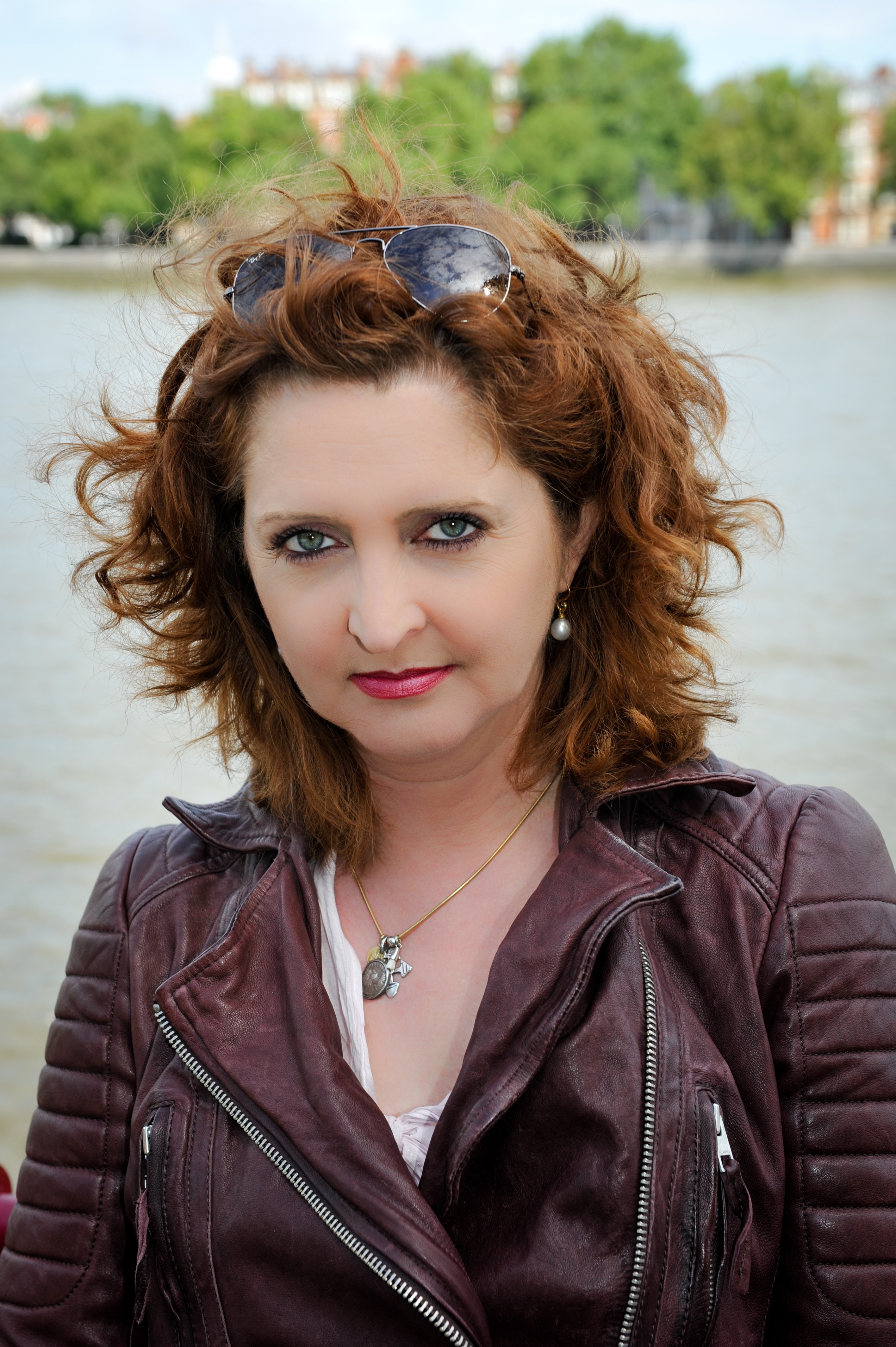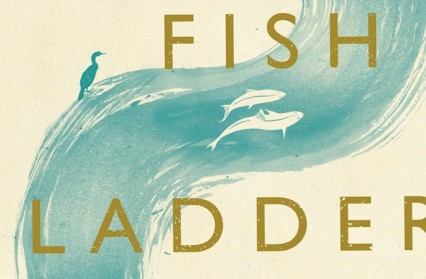
John Lavin interviews author Katherine Norbury about her debut novel The Fish Ladder to get an insight into her writing process and the meaning behind her book.
Katharine Norbury trained as a film editor with the BBC and has worked extensively in film and television drama. She is a graduate of the Creative Writing MA programme at UEA and a doctoral candidate at Goldsmiths. She lives in London with her family. The Fish Ladder is her first book.
The Fish Ladder, your first book, is a deeply personal one, and this is part of its power. Was it difficult to write? It feels like a book that you simply had to write?
In the first instance The Fish Ladder flowed easily because I was writing it as a record of the long summer holiday spent with my daughter, Evie. I intended it to be a handmade book, bound with twine and covered in leaves and bits of shell and things that we’d found together. So there was no external pressure or even any concrete idea of a prospective reader beyond an adult version of my daughter.
However, when I was diagnosed with cancer it changed what I was writing. I came to realise that the book had overflowed its boundaries. It had become something that might have a more public voice, because much of the ground that it covered was common ground. (1 in 5 pregnancies end in miscarriage, 1 in 8 women develop breast cancer, 1 in 3 of us develop cancer, 1 in 4 are affected by some kind of mental illness, 1 in 4 are affected by adoption in some way, all of us, if we’re fortunate, bury our fathers).
At that point the writing did become difficult, because the events about which I write in the second part of the book were happening even as I was writing them, and it was difficult to maintain an emotional distance from, for example, chemotherapy, or the search for my “birth” mother. It was especially difficult to write with any semblance of a neutral voice about my mother so I had to draw on a very deep discipline, which I suppose is the discipline of being writer.
The book is in large part an exploration of grief and absence mirrored by the idea of following rivers to their sources. In a work of fiction this might be seen as a deliberate poetic conceit but this is a work of autobiography. How did it feel to notice and live through and pull together all of these patterns and parallels from your own life?
Interesting that you say “grief and absence”. While this is true, what struck me most when I was writing The Fish Ladder was a sense of joy, of presence, of living in the moment — “being there.” I was aware – while travelling with a young child through a place that was beautiful, or in catching mackerel for the first time, or in reading Swallows and Amazons to Evie – of a sense of, I think immanence is probably the best word. Although some of the more difficult events that underpinned the writing, and motivated our walking in the first instance, lent a poignancy to the whole experience, which is perhaps why I chose to try to capture it.
As to the idea of poetic conceit being the property of fiction. Fiction originally meant “to give shape to something” from the Latin “fictio” and before that from a Proto-Indo-European root meaning “to knead”. So it refers to either clay making or bread making. It’s not a synonym for “novel” and neither does it mean, so far as I can tell, “to make something up”. There’s no reason why structure, or a joy in language, or pushing at the boundaries of form should be regarded as the exclusive property of the novelist. As you know I trained as a film editor and I realise that I have approached the material as though it were a documentary. Also, I love metaphor, which the idea of the river quite effortlessly evolved into, and the right metaphor does so much of your work for you simply by being there. So in answer to your question, I don’t, in the first instance, think of The Fish Ladder as autobiography. Rather, that in order to illustrate the ideas that I wanted to explore: about identity, about story/narrative, about names, which change, while the archetypes that they describe remain unchanged, about mythology, about place, about the natural world, about love — I have mined my own life. And because I learned my craft in the cutting room the book adheres to a “traditional” 5 act structure. It even has an interval!
Neil Gunn’s The Well at the World’s End was a pivotal influence on the events described in the book. Could you tell us a little about that book and its influence on you?
I was struck, immediately, by the things that I had in common with the fictional hero of The Well At The World’s End: of being “a certain age”, so in other words the passing of youth. Of having lost an unborn child. And of finding myself in an ancient landscape – that was nonetheless new to me – with someone I love, and having an indeterminate sense of longing for something just out of reach. What C.S. Lewis referred to as “Sehnsucht” – a German word that doesn’t seem to have an accurate translation into English although perhaps there is a Welsh word for it. So that idea of walking out into a landscape and learning things about yourself and other people simply by “being there” had a huge emotional resonance with me. And the idea of the mythical well at the end of the world… It is such a powerful metaphor that I suspect it needs no further explanation.
The book, amongst other things, is a wonderful example of New Nature Writing. Why do you think that there has been such resurgence in interest in nature writing recently?
Thank you! Well, there seems to be a great deal of fascination and debate over what is or is not “Nature Writing”. Of those of us who have been included in the “New” there seems to be even more surprise. I think, in essence, that this new writing isn’t necessarily a descendent of the classical naturalist’s tradition of observation from within a deep knowledge of Natural History, rather it comes from a sense of urgency to restore or acknowledge our connection with and dependence on the natural world, and a personal narrative is often present within such works. On a personal level I am fascinated by place, very much an amateur, and think of myself rather as a descendent of travel writing as defined by writers like Peter Matthiesen (The Snow Leopard) than strictly speaking of “Nature Writing”. Often the stories that I tell are those that I have collected along the way, folk narratives if you like, and are invariably subjective, possibly even inaccurate, but none the less valid for that. Richmond Lattimore’s translation of The Odyssey is probably the greatest single influence on my writing. Also The Kalevala, the ancient Finnish and Karelian creation myths collected on foot by a local historian, Elias Lonnrot, during the nineteenth century. I am a passionate environmentalist and believe ardently that the natural world and “our world” are one and the same thing, with us as the unwieldy and rather terrifying alpha predator at the top of the food chain. I suspect this kind of writing wants to break down borders, literally, so that we worry less about who owns what (and who has the right to exploit what, in terms of natural resources) and replace it with a deep love of place, and of the natural world, and of the Earth. Also, an understanding that conservation and environmentalism need, quite urgently, to transcend both political and national borders for the sake of all of us.
Another exponent of New Nature Writing is Miriam Darlington, with whom you will be appearing at Caught by the River Teifi. Do you see any shared affinities in your individual approaches to nature writing?
Before I began writing The Fish Ladder I had read very little so-called “nature writing” and that was very important to me – to not know what other people were doing – because I didn’t want to be influenced by any one for good or ill. So I hadn’t read Richard Mabey, or Rebecca Solnit or Gary Snyder, although I had read Roger Deakin’s Waterlog and Robert Macfarlane’s The Wild Places (both of whom I think of as travel writers in the first instance, indeed I was fortunate to be invited by Robert to give him notes on a manuscript of The Old Ways). I have read all of those writers since and many more besides. I read a lot of poetry, and plays, and myths – I’ve already mentioned The Odyssey and The Kalevala; A Thousand and One Nights. I listen to the World Service. I watch a lot of movies. I hardly ever watch TV and I never read newspapers, except for sometimes the Arts section. I have now read Otter Country and have very much enjoyed it. Miriam has a poet’s eye. Or ear, and she is a descendent of that classical naturalist’s tradition – quite literally, through her family – and her work has been a delight to discover. I think being a woman is significant, for both of our work. Melissa Harrison pointed out that last year, when asked to choose her “best of” books by nature writers, there was only one woman out of fourteen possible candidates. Miriam also writes with humour, which is always welcome but often, how can I put it? Evasive, within this genre!
Finally, what next? Are you working on any new projects at the moment?
I am. I am interested in notions of identity (as will be clear from The Fish Ladder). I am also interested in nomadic communities, and in what happens when “sedentary” people are displaced from the land in which they grew up. Also in the notion of the “blow in” – which I have been for the whole of my life (as an adoptee – who doesn’t even know my father’s nationality – the status has been grafted onto my DNA). I am undertaking a rather huge survey of the English Circus at the moment. And more walking. Some of it in the Llyn Peninsula. So yes, people and place. And memoir. Watch this space!












